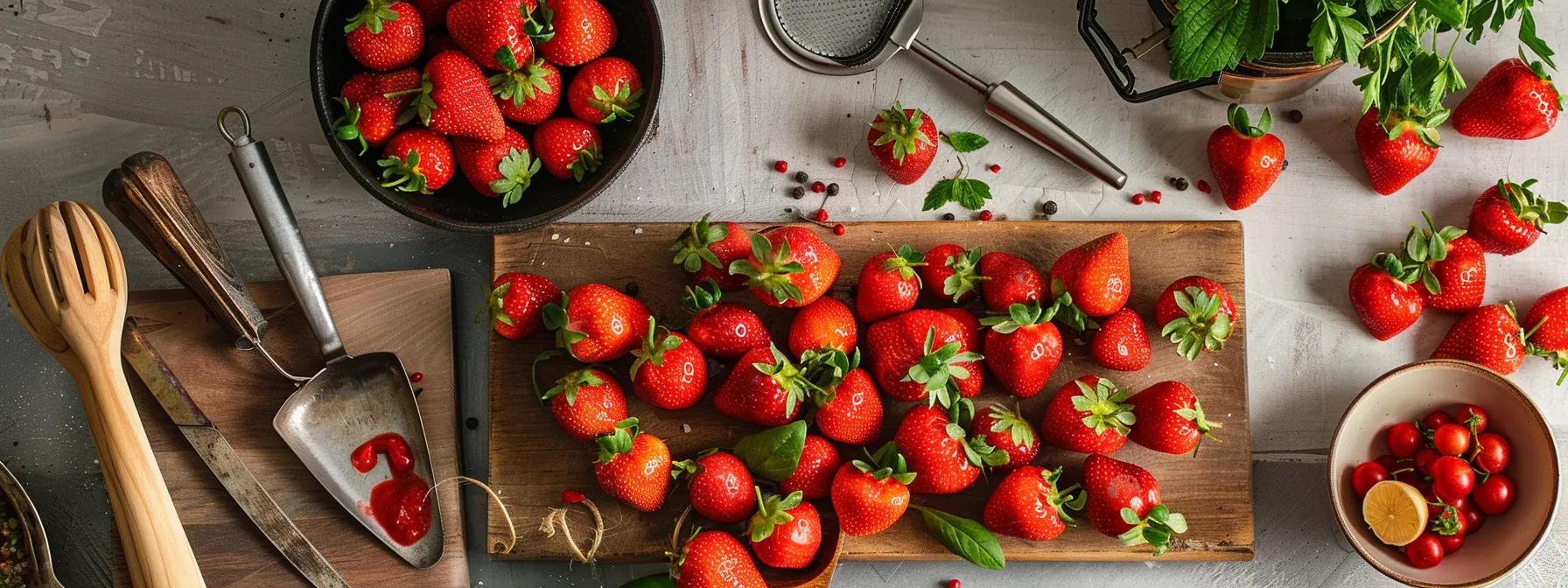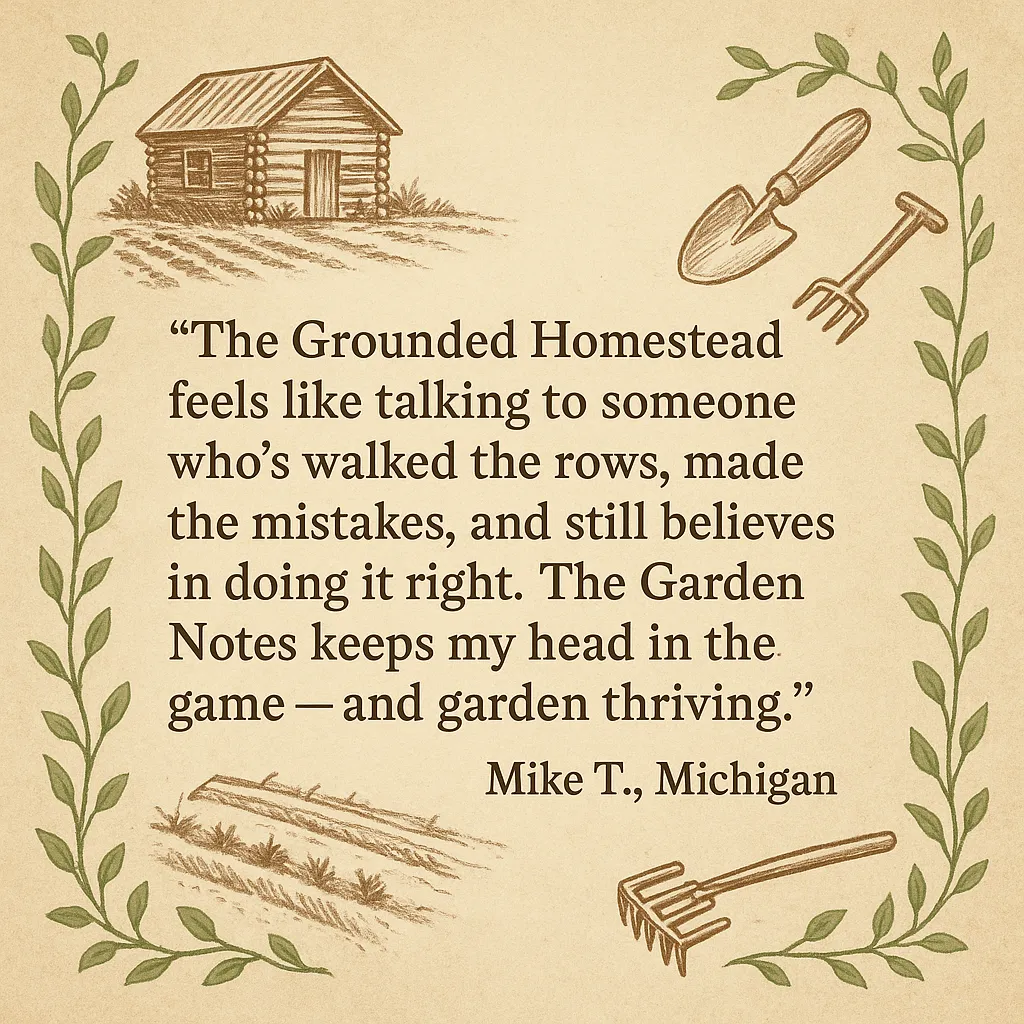
Top 14 Practical Uses for Fresh Strawberries (Beyond Jam)
Top 14 Practical Uses for Fresh Strawberries (Beyond Jam)
The Year We Had Too Many Berries (And Why That Was a Gift)
One June, the strawberry patch exploded. I’m talking baskets full, countertop piles, red fingerprints on the fridge handle. We were swimming in berries. I thought we’d overdone it. Grandma just smiled.
"There’s always a way to use what you’ve been given," she said.
That was the year I learned strawberries aren’t just for jam. They can be dried, fermented, frozen, steeped, blended, bottled, and gifted. If you know what you’re doing, every part of the berry has a use. Here are 14 of my go-to strategies to make sure not a single one goes to waste.
SECTION 1: Edible Everyday Uses — Make the Most of Fresh Berries
1. Homemade Strawberry Vinegar
Add chopped berries to a jar of white wine or apple cider vinegar, cover with a non-metal lid, and let it infuse for 1–2 weeks. Strain and use in salad dressings, marinades, or even as a digestive tonic. Store in a cool dark place or refrigerate.
2. Strawberry Leather (Dehydrated Fruit Strips)
Puree ripe strawberries (add a touch of honey or lemon juice if needed), then spread thinly on parchment-lined trays. Dehydrate at 135°F for 6–8 hours. In the oven, use the lowest setting with the door cracked open. Cut into strips and roll for easy snacks.
3. Herbal Strawberry Leaf Tea
Strawberry leaves (young and healthy ones) are mildly astringent and full of minerals. Dry them in a warm spot out of direct sunlight, then steep 1 tsp per cup for 5–7 minutes. Mix with mint or chamomile for a soothing blend.
4. Real Fruit Popsicles
Blend strawberries with yogurt, coconut milk, or lemon juice. Add herbs like mint or basil for a twist. Pour into molds and freeze overnight. No added sugar needed if your berries are ripe.
5. Fresh Strawberry Shrub (Drinking Vinegar)
Combine equal parts mashed strawberries, raw sugar, and vinegar (apple cider works well). Let it steep in the fridge for 3–5 days, then strain. Mix with sparkling water or spirits for a refreshing drink.
SECTION 2: Using the Whole Plant — Hulls, Leaves & Compost Gold
6. Compost the Hulls (But Do It Right)
Strawberry hulls are green gold for compost. Chop them up a bit and bury under browns (leaves, shredded paper) to avoid fruit fly issues. They break down quickly and feed your next planting cycle.
7. Strawberry Hull Infused Water or Vinegar
Don’t toss the tops. Steep hulls in cold water for a few hours to make a light, refreshing drink. Or add them to vinegar for a mild cleaning solution or skin toner. Use within a week for best results.
8. Freeze the Hulls for Smoothies
Hull and toss the tops into a freezer bag. While they don’t pack the sweetness of the fruit, they blend well into smoothies when combined with bananas or citrus.
9. Leaf & Hull Tea Blends
Dry both together and mix with rosehips, lemon balm, or raspberry leaf. This makes a mineral-rich tea that supports digestion and can help reduce inflammation. Use a teaspoon per cup and steep 5 minutes.
SECTION 3: Preserving the Bounty — Short and Long Term
10. Fermented Strawberries
Lacto-fermentation creates a tangy, probiotic snack. Mix berries with 2% salt by weight, press into a jar, and keep submerged under brine. Ferment at room temp for 3–5 days. Refrigerate when done.
11. Dehydrated Strawberry Slices
Slice berries thin and even. Dry in a dehydrator at 135°F until leathery or crisp (6–10 hours). Use as snacks, in granola, or atop baked goods.
12. Strawberry Freezer Jam
Mash berries, mix with low-sugar pectin and sweetener of choice. Pour into clean freezer-safe containers, leaving headspace. Let sit for 30 minutes, then freeze. Lasts up to a year.
13. Whole Berry Freezing Tips
Rinse, hull, and spread berries on a baking sheet to freeze individually. Once solid, transfer to bags. This keeps them from clumping and prevents mushy thawing.
14. Freeze-Dried Strawberries (If You Have a Machine)
Freeze-drying preserves flavor, color, and nutrients. Store in airtight jars or vacuum packs. Great for emergency prep, hiking, or gifting.
From Surplus to Strategy
Every strawberry harvest teaches me something new. And every year, I find a few more ways to stretch the berries further. Grandma was right — abundance isn’t a problem. It’s an invitation to get creative.
Start with a couple of these ideas this season. See what sticks. Save the rest for next year. And if you want to keep this guide close, I’m putting together a printable recipe and preservation pack just for you. (Stay tuned.)
Let the strawberries lead. You’ll never run out of ways to use what you’ve grown.
Looking for more professional guidance & homesteading resources?
Explore our trusted guides to learn more about growing healthy food, managing your land, and building lasting systems for your homestead. Whether you're looking for planting tips, seasonal checklists, or natural solutions that actually work—we’ve got you covered.
Start with these helpful reads:
Everything to know about Strawberries:
Start with Strawberries: Ground Your Garden with Fruit that Grows Back
6 Common Strawberry Plant Diseases and How to Treat Them Naturally
The 6 Pests That Wreck Strawberry Crops—and How to Beat Them Naturally
Beyond Straw: Choosing the Right Mulch for Every Strawberry Bed
Runner Management 101: Multiply Your Strawberry Patch with Purpose
Frost, Flood, and Fungus: Protecting Strawberries in Extreme Weather
The Best Strawberry Varieties for Continuous Summer Harvests
Start a U-Pick Strawberry Business (Even on 1 Acre)
How to Fertilize Strawberries for Yield, Flavor, and Runner Control
Strawberries in Small Spaces: Balcony, Border, and Vertical Growing Techniques
Wild Strawberries vs. Cultivated: Should You Grow Fragaria vesca?
The Complete Guide to Propagating Strawberries: Growing Strawberries from Seed


Facebook
Instagram
X
Youtube